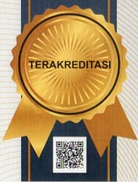Author Guidelines
General Rule of JSHP Submission
- Firstly, the author should register as either an author or reviewer (checking role as author or reviewer) in the “register”. For further information, you can download our register and submit guideline (DOWNLOAD REGISTER AND SUBMIT GUIDELINE)
- After the registration step is completed, log in as an author, click in “New Submission”. The article submission stage consists of five stages, such as: (1). Start, (2). Upload Submission, (3). Enter Metadata, (4). Upload Supplementary Files, (5). Confirmation.
- In the “Start” column, chose Journal Section (Full Article), check all the checklists.
- In the “Upload Submission” Columns, upload the manuscript files in MSWord format in this column.
- In the “Enter Metadata” columns, fill in with all the author data and affiliation. Including the Journal Title, Abstract and Indexing Keywords.
- In the “Upload Supplementary Files” columns, the author is allowed to upload supplementary files, the statement letter, or any other else.
- In the “Confirmation” columns, if the data you entered are all correct already, then click “Finish Submission”.
- SHP journal provides an article template that can be downloaded here: "JSHP Template"
- The authors do not need to change paper margin size, because the size of the margin already accordance with the standard A4 paper size
- The author also does not remove the header and the footer of the article template
Language
The language of the JSH Journal is either in Bahasa Indonesia or in English. If your manuscript is written in English, please write your manuscript in good English. Authors who feel their English language manuscript may require editing to eliminate possible grammatical or spelling errors and to conform to correct scientific English may wish to use the English Language Editing service.
Style
Manuscripts should be organized in the following order: Title; authors and affiliations; abstract and key words; main body of paper; acknowledgment (where applicable); references; appendices (where applicable).
Abstract
Abstract should not exceed 150 words. The abstract should state briefly the state-of-the art, research gap, purpose of the research, methods, the principal results and major conclusions. An abstract is often presented separately from the article, so it must be able to stand alone. For this reason, References should be avoided, but if essential, then cite the author(s) and year(s). Also, non-standard or uncommon abbreviations should be avoided, but if essential they must be defined at their first mention in the abstract itself. so it may become a useful document in an information-retrieval system. Three to ten key words should be included.
Figures and Tables
Photographs, charts, illustrations and diagrams are to be referred to as "Figure(s)". All figures and tables should be placed within the text and identified with consecutive Arabic (not Roman) number in the order they are referred (separate numbers for tables and figures). All lettering, lines and symbols must be of uniform size and cropped to remove irrelevant information. It is better to use several simple tables than one large, complex table. All figures should be clear and suitable for reduction (up to 50% original size). Lettering must be clear and must be large enough to be reduced by the same proportion. All tables and figures must be accompanied by a self-explanatory caption.
Mathematical Expressions
Mathematical symbols and formulae should be typed. Particular care should be exercised in identifying all symbols and in avoiding ambiguities. Distinction should be made between the number one (1) and the letter l, or i and between the number zero (0) and the letter o. Equations must be numbered consecutively. Equation numbers should appear in parentheses. All equation number must appear on the right-hand side of the equation and should be referred to within the text. Use following sequence of parenthesis; )] }.
References and Use of Reference Management Software
Increased discoverability of research and high quality peer review are ensured by online links to the sources cited. In order to allow us to create links to abstracting and indexing services, please ensure that data provided in the references are correct. Please note that incorrect surnames, journal/book titles, publication year and pagination may prevent link creation.
Please ensure that every reference cited in the text is also present in the reference list (and vice versa) using APA 6th Edition. Unpublished results and personal communications are not recommended in the reference list, but may be mentioned in the text. If these references are included in the reference list they should follow the standard reference style of the journal and should include a substitution of the publication date with either 'Unpublished results' or 'Personal communication'. Citation of a reference as 'in press' implies that the item has been accepted for publication.
Authors should use reference management softwares, such as Mendeley, Zotero, or EndNote, for citations and for preparing the reference list. If no template is yet available for this journal, please follow the format of the sample references and citations as shown in this Guide.
Example of APA 6th Edition Style:
Attorps, I., Björk, K., & Radic, M. (2017). Generating the patterns of variation with GeoGebra : the case of polynomial approximations. International Journal of Mathematical Education in Science and Technology, 47(1), 45–57. https://doi.org/10.1080/0020739X.2015.1046961
Budiman, J., & Susanty, Y. F. (2014). Analisis Komparatif Penerapan Suku Bunga KPR Bank Batam. Jurnal Manajemen, 14(1), 97–124. Retrieved from http://majour.maranatha.edu/index.php/jurnal-manajemen/article/view/1401
Byun, S., Irvin, M. J., Bell, B. A., Irvin, M. J., & Advanced, B. A. B. (2014). Advanced Math Course Taking : Effects on Math Achievement and College Enrollment. THE JOURNAL OF EXPERIMENTAL EDUCATION, 83(4), 439–468. https://doi.org/10.1080/00220973.2014.919570
Edwards, T. G., & Chelst, K. R. (2015). Linear Programming in the Classroom Using GeoGebra. Mathematics Teaching, 8(May), 8.
Verhoef, N. C., Coenders, F., Pieters, J. M., van Smaalen, D., & Tall, D. O. (2015). Professional development through lesson study: teaching the derivative using GeoGebra. Professional Development in Education, 41(1), 109–126. https://doi.org/10.1080/19415257.2014.886285
Saiful Ghozi, Editor in Chief of JSHP


